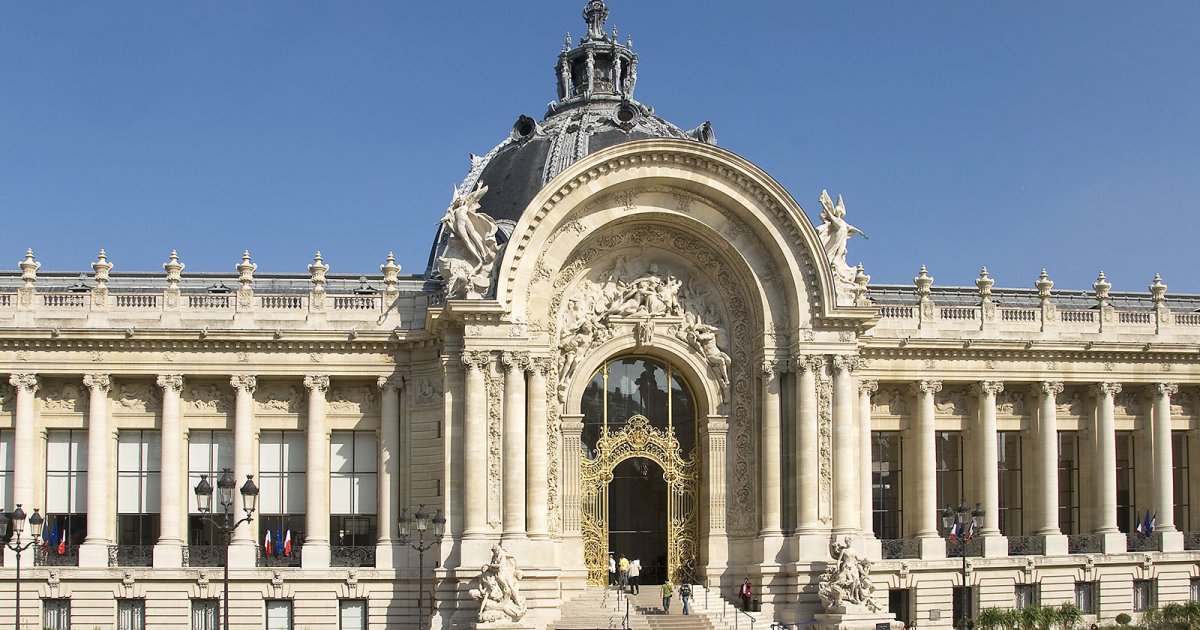GRAND ET PETIT PALAIS, Petit Palais
 Language: English / USA
Language: English / USA
The entire architectural complex formed by the two palaces and Pont Alexandre III was assigned to the same architect who, however, realized that he was unable to manage the construction sites in time for the exposition, and delegated part of the work to other studios, entirely keeping Petit Palais for himself. As its name suggests, this building is smaller than the neighboring Grand Palais, and has a strange trapeze-shaped base with beveled corners. Although its overall architectural tone will remind you of lavish Neoclassicism, the decorations and attention to details make it quite pleasant and graceful.
The bas-relief above the entrance depicts a feminine figure symbolizing the city of Paris surrounded by The Nine Muses: the protectors of the arts that are honored and celebrated in Paris. In fact, the relationship between the city and the world of art is celebrated at the Petit Palais: it is home to the Musée des Beaux Arts de Ville de Paris, where you can admire works of art from different eras ranging from antiquity to impressionism, with 17th-century Dutch and Italian Renaissance furnishings, porcelain, and paintings that have all been donated by private individuals or purchased directly by the Parisian municipality.
Opened to the public immediately after the Expo and continuously enriched over the 1900s, the museum certainly can't compete with the immense national museums (such as the Louvre, Beaubourg and Musée d'Orsay), but on the other hand you'll likely find it much larger and more complex than the single private museums in Paris thanks to its over 20,000 objects!
Of course, you can only see a small part of the museum's vast number of objects, as there are too many to have them all permanently displayed; they are instead included in rotating exhibits. You can certainly admire the most important works year-round, including the paintings by Gauguin, Manet, and Cézanne.
FUN FACT: the museum has fascinating self-portraits of two great masters from two very different eras, but with some interesting common features: Rembrandt and Gustave Courbet. Both are depicted at about thirty years old, and are both with a dog. Courbet is outdoors, relaxed, with a black hunting dog; Rembrandt is indoors with strange, oriental-style clothes and a large tramp in the foreground.
And with this we have finished our tour of the Grand Palais and Petit Palais in Paris. MyWoWo thanks you for staying with us, and will see you at the next Wonder of the World!



